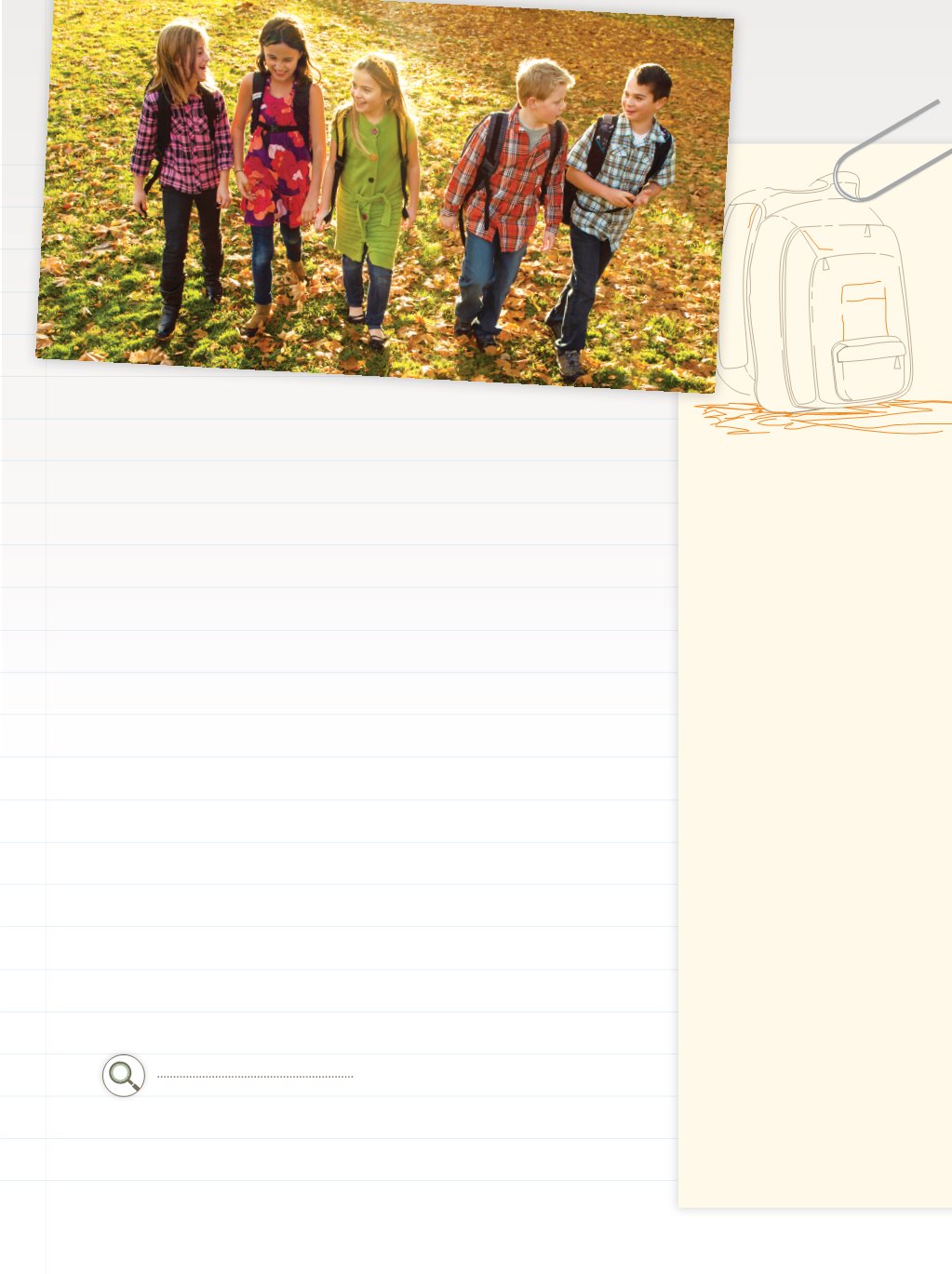
aspirus.org
5
Parents
Get ready for school
SOME
things you can count on when
school starts in the fall.
One is an avalanche of advertising.
Seemingly every store offers sales on
notebooks, pens and other supplies.
Another sure thing—kids complain
about homework, teachers or having to
get up early after a summer of sleeping
in.
Unfortunately, you can also expect a
few potentially serious dilemmas, such
as children coming home with viral
infections.
Fortunately, you can take steps to help
prevent their getting sick.
Protect against illness
Why do kids who were healthy all
summer often get sick when school
resumes? Part of the reason is the season.
Colds and flu are as much a piece of the
fall and winter landscapes as are fallen
leaves and snow.
Also, children have not built up an
immunity to many cold viruses, making
them vulnerable to those that spread
throughout the school population.
As a parent, there are two important
things you can do to help protect your
children from disease:
1
Teach them to wash their hands well
and often. That means scrubbing
their hands with soap for at least
20 seconds, then rinsing them under
running water.
2
Keep their immunizations up-to-date.
You can find out what vaccinations
your child needs and when online at
morehealth.org/kids
.
Inform school officials
If your child has a chronic health
condition—such as asthma—talk with
your child’s doctor about working with
school officials to meet your child’s
health needs.
You, your child’s doctor and school
staff might want to develop a written
plan, including:
w
w
How to handle medications.
w
w
Whom to contact if there is a problem.
w
w
What to do in an emergency.
Also remember to sign any necessary
consent forms.
Source: American Academy of Pediatrics
HELPYOUR KIDS STAY HEALTHY
If you need a primary care provider
for your child, call the Aspirus
Information Center at
715.847.2380
or
800.847.4707
.
Backpack
overload?
A backpack should never
weigh more than 20 percent
of a child’s body weight,
According to the American
Academy of Pediatrics.
Here are ways you can
help monitor your children’s
backpacks:
w
w
Look for a backpack with
two wide, adjustable and
padded straps. Make sure
your kids wear both straps.
w
w
Put heavy items close to
the center of the back.
w
w
Teach your kids to bend at
the knees and use their
legs to lift the backpack.
w
w
Consider buying a
backpack with wheels.
w
w
Encourage your child to
make frequent locker stops
to unload the pack.
Your children may have
backpack overload if they:
w
w
Struggle to put the
backpack on or take it off.
w
w
Change posture while
wearing the backpack.
w
w
Have red marks on their
shoulders.
w
w
Feel tingling or numbness
in their arms or legs.


